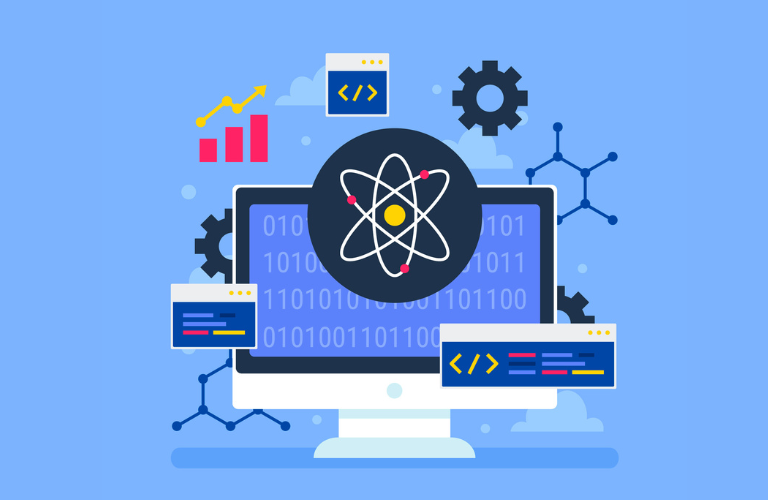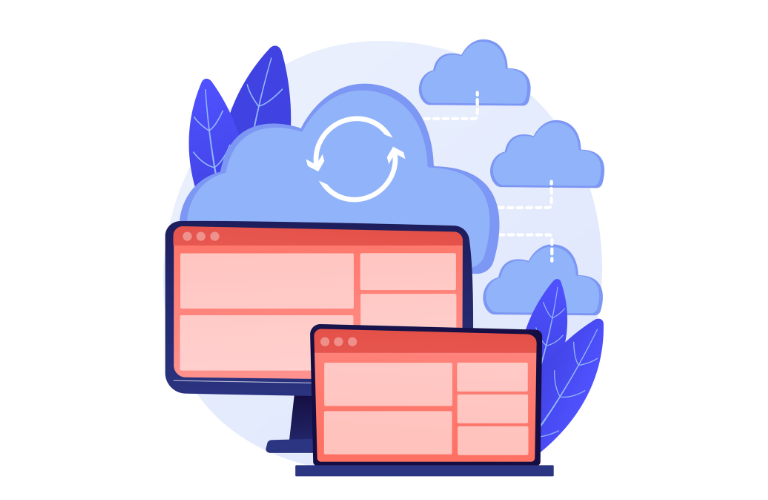Ubuntu Autonomous Patch Management CLI is revolutionizing how system administrators manage large Ubuntu server fleets. With cyber threats rising and downtime costing businesses dearly, automating patch management is no longer optional—it’s essential. This article explores how to implement a self-healing, automated patch management system using Ubuntu’s command-line interface (CLI).
From zero-touch upgrades to AI-driven scheduling and robust rollback mechanisms, we’ll cover practical steps, commands, and best practices to streamline your patching process, minimize human error, and ensure system stability. Whether you’re managing a handful of servers or thousands, this guide provides actionable insights to keep your Ubuntu systems secure and efficient.
Table of Contents
Why Ubuntu Autonomous Patch Management CLI Matters
Patching is critical to securing Ubuntu servers against vulnerabilities. According to IBM, unpatched software accounts for over 60% of cyberattacks. Manual patching is time-consuming, error-prone, and unscalable for large fleets. The Ubuntu Autonomous Patch Management CLI addresses these pain points by automating updates, reducing downtime, and ensuring compliance with standards like GDPR and HIPAA. Tools like unattended-upgrades, Landscape, and Livepatch empower sysadmins to maintain robust, secure systems with minimal intervention.
Key Components of Autonomous Patch Management
To build an effective Ubuntu Autonomous Patch Management CLI system, you need to understand its core components. These tools and processes work together to create a self-healing environment that minimizes manual effort.
- Unattended Upgrades: Automatically applies security patches without user intervention, ideal for critical updates.
- Canonical Livepatch: Patches the Linux kernel without rebooting, reducing downtime for high-availability systems.
- Landscape: Canonical’s management tool for scheduling and monitoring updates across large fleets.
- AI-Driven Timing: Uses machine learning to predict optimal update windows, minimizing disruptions.
- Rollback Mechanisms: Ensures systems can revert to stable states if a patch causes issues.
Setting Up Ubuntu Autonomous Patch Management CLI
Implementing Ubuntu Autonomous Patch Management CLI starts with configuring your system for automation. Below is a step-by-step guide to set up a self-healing patch management system using CLI tools.
Step 1: Install and Configure Unattended Upgrades
The unattended-upgrades package is the backbone of automated patching in Ubuntu. It’s enabled by default but requires configuration for optimal performance.
- Install the Package:
sudo apt-get install unattended-upgrades -y- Enable Automatic Updates: Run the following command to configure automatic updates:
sudo apt-get install unattended-upgrades -y| sudo dpkg-reconfigure -plow unattended-upgrades |
Select “Yes” to enable automatic security updates.
- Customize Settings: Edit the configuration file to specify which updates to apply:
sudo apt-get install unattended-upgrades -y| sudo nano /etc/apt/apt.conf.d/50unattended-upgrades |
Ensure the following lines are enabled:
sudo apt-get install unattended-upgrades -y| “${distro_id}:${distro_codename}-security”; “${distro_id}:${distro_codename}-updates”; |
This restricts updates to security patches and stable updates.
Step 2: Enable Canonical Livepatch for Zero-Touch Kernel Updates
Livepatch eliminates the need for reboots when patching critical kernel vulnerabilities, a game-changer for high-availability servers.
- Enable Livepatch: Sign up for an Ubuntu Pro subscription to access Livepatch. Then, enable it with:
sudo apt-get install unattended-upgrades -y| sudo pro enable livepatch |
- Verify Livepatch Status: Check if Livepatch is active:
sudo apt-get install unattended-upgrades -y| sudo canonical-livepatch status |
- Automate Kernel Patching: Livepatch automatically applies patches to the running kernel, ensuring zero downtime for critical vulnerabilities.
Step 3: Integrate Landscape for Fleet Management
For large server fleets, Canonical’s Landscape tool simplifies patch management across multiple machines.
- Set Up Landscape: Deploy Landscape on-prem or use the cloud-hosted version. Register your servers:
sudo apt-get install unattended-upgrades -y| sudo landscape-config –account-name <your-account> –url https://landscape.canonical.com |
- Schedule Updates: Use Landscape’s web interface to group servers and schedule updates, leveraging AI-driven timing to avoid peak usage periods.
- Monitor Compliance: Landscape provides dashboards to track patch status and compliance, ensuring no server is left vulnerable.
AI-Driven Timing for Smarter Updates
AI-driven timing optimizes when patches are applied to minimize disruptions. Tools like Landscape use machine learning to analyze server usage patterns and schedule updates during low-activity periods. For example, an e-commerce server might be patched at 3 AM when traffic is minimal. To implement this via CLI:
- Analyze Usage Patterns: Use monitoring tools like htop or sar to collect usage data:
sudo apt-get install unattended-upgrades -y| sudo apt-get install sysstat sar -u 1 10 |
- Script AI-Driven Scheduling: Create a script to check server load and trigger updates when CPU usage is low:
sudo apt-get install unattended-upgrades -y| #!/bin/bash LOAD=$(uptime | awk ‘{print $10}’ | cut -d, -f1) if (( $(echo “$LOAD < 0.5” | bc -l) )); then sudo apt-get update && sudo apt-get upgrade -y fi |
- Save as auto-update.sh, make executable (chmod +x auto-update.sh), and schedule via cron:
sudo apt-get install unattended-upgrades -y| crontab -e 0 3 * * * /path/to/auto-update.sh |
Rollback Mechanisms for Safety
Patches can sometimes introduce bugs or compatibility issues. A robust rollback mechanism ensures you can revert to a stable state.
- Backup Before Patching: Always back up critical files before applying updates:
sudo apt-get install unattended-upgrades -y| sudo cp -r /etc /etc.bak |
- Use Snapshots: If using virtualized environments, take a snapshot before patching:
sudo apt-get install unattended-upgrades -y| sudo virsh snapshot-create <vm-name> |
- Revert Updates: If a patch fails, use apt to downgrade packages:
sudo apt-get install unattended-upgrades -y| sudo apt-get install <package-name>=<previous-version> |
- Restore Kernel with Livepatch: If a Livepatch update causes issues, disable it:
sudo apt-get install unattended-upgrades -y| sudo canonical-livepatch disable |
Use Cases for Ubuntu Autonomous Patch Management CLI
Ubuntu Autonomous Patch Management CLI shines in various scenarios:
- Enterprise Data Centers: Automate patching across thousands of servers to ensure compliance and security without manual intervention.
- Cloud Environments: Use tools like Landscape to manage updates for Ubuntu instances on AWS, Azure, or GCP.
- High-Availability Systems: Leverage Livepatch to apply kernel patches without rebooting, critical for 24/7 services like web servers or databases.
Best Practices for Ubuntu Autonomous Patch Management CLI
To maximize efficiency and security, follow these best practices:
- Test Patches First: Use a staging environment to test updates before deploying to production.
- Prioritize Security Patches: Configure unattended-upgrades to prioritize security updates.
- Monitor Regularly: Use Landscape or tools like Nagios to track patch status and system health.
- Document Everything: Maintain logs of patch applications and rollbacks for audits.
- Stay Informed: Subscribe to Ubuntu’s security mailing list for real-time patch notifications.
Common Challenges and Solutions
Even with automation, challenges arise. Here’s how to address them:
- Dependency Issues: Use sudo apt-get autoremove to clean up unused dependencies post-upgrade.
- Failed Patches: Check logs in /var/log/apt/history.log to diagnose issues.
- Resource Spikes: Schedule patches during low-traffic periods using AI-driven timing.
- Rollback Failures: Ensure backups and snapshots are in place before patching.
Real-World Example: E-Commerce Server Fleet
Imagine managing a fleet of 500 Ubuntu servers for an e-commerce platform. Using Ubuntu Autonomous Patch Management CLI, you configure unattended-upgrades for daily security updates, enable Livepatch for kernel patching, and use Landscape to schedule non-critical updates during off-peak hours. A custom script monitors server load to delay updates if traffic spikes. If a patch causes issues, you revert using snapshots, ensuring zero downtime. This setup saves hours of manual work and keeps the platform secure and compliant.
Conclusion
Ubuntu Autonomous Patch Management CLI empowers sysadmins to maintain secure, stable, and efficient server fleets with minimal effort. By leveraging tools like unattended-upgrades, Livepatch, and Landscape, you can achieve zero-touch upgrades, AI-driven scheduling, and reliable rollbacks. These practices reduce downtime, eliminate human error, and ensure compliance. Start implementing these CLI commands and shortcuts today to transform your patch management process.
FAQs
1. What is Ubuntu Autonomous Patch Management CLI?
Ubuntu Autonomous Patch Management CLI is a set of command-line tools and processes, like unattended-upgrades and Canonical Livepatch, that automate software and kernel updates on Ubuntu servers. It enables zero-touch upgrades, AI-driven scheduling, and rollback mechanisms to reduce downtime and human error in managing large server fleets.
2. How do I set up automatic updates on Ubuntu using CLI?
To enable Ubuntu Autonomous Patch Management CLI, install the unattended-upgrades package with sudo apt-get install unattended-upgrades -y, then configure it using sudo dpkg-reconfigure -plow unattended-upgrades. Edit /etc/apt/apt.conf.d/50unattended-upgrades to specify security and stable updates, ensuring automated patching with minimal manual effort.
3. Can Ubuntu Autonomous Patch Management CLI update the kernel without rebooting?
Yes, with Canonical Livepatch, part of Ubuntu Autonomous Patch Management CLI, you can apply critical kernel patches without rebooting. Enable it with an Ubuntu Pro subscription using sudo pro enable livepatch, then verify with sudo canonical-livepatch status for zero-downtime updates.
4. How does AI-driven timing work in Ubuntu patch management?
AI-driven timing in Ubuntu Autonomous Patch Management CLI uses tools like Canonical’s Landscape to analyze server usage patterns and schedule updates during low-activity periods. You can script this with CLI commands, like checking CPU load with sar -u 1 10 and triggering updates via cron jobs when usage is low.
5. What happens if a patch fails in Ubuntu Autonomous Patch Management CLI?
If a patch fails, Ubuntu Autonomous Patch Management CLI supports rollbacks. Use snapshots in virtualized environments (sudo virsh snapshot-create <vm-name>) or downgrade packages with sudo apt-get install <package-name>=<previous-version>. Check /var/log/apt/history.log for diagnostics to resolve issues.
6. Is Ubuntu Autonomous Patch Management CLI suitable for large server fleets?
Absolutely. Ubuntu Autonomous Patch Management CLI, with tools like Landscape, is designed for large fleets. It automates updates, monitors compliance, and schedules patches across multiple servers, reducing manual work and ensuring security and stability for enterprise environments.




